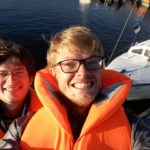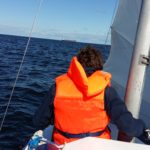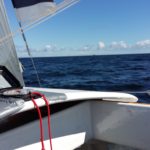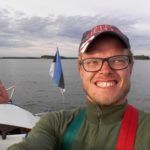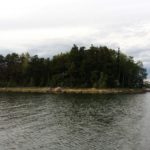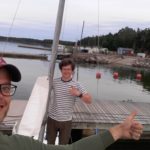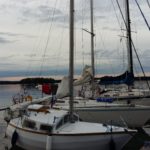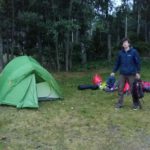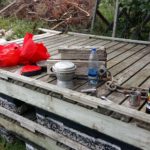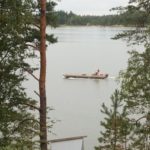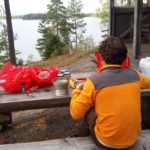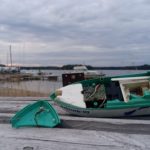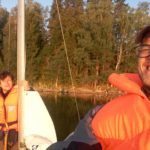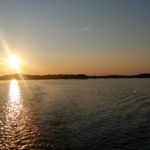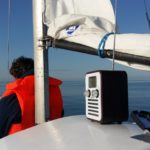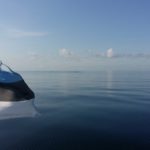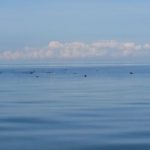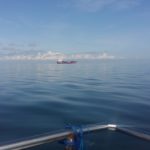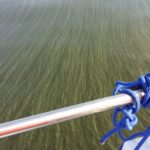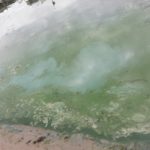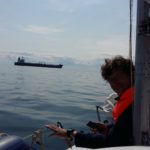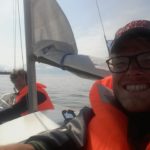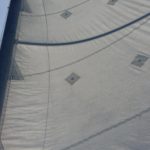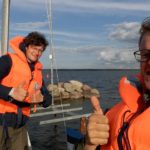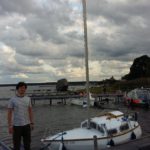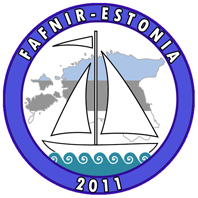Hello!
The past week was very adventurous for Kvark the homebuilt microcruiser. Namely, it sailed across the Gulf of Finland and back again, covering about 150 km! This was the longest trip so far for Kvark and the first trip on which the crew lost sight of all land and had to use a compass to keep bearing. It also marked an important point in the history of Kvark, as crossing the Gulf of Finland was one of the catalysts, which started the construction of Kvark.
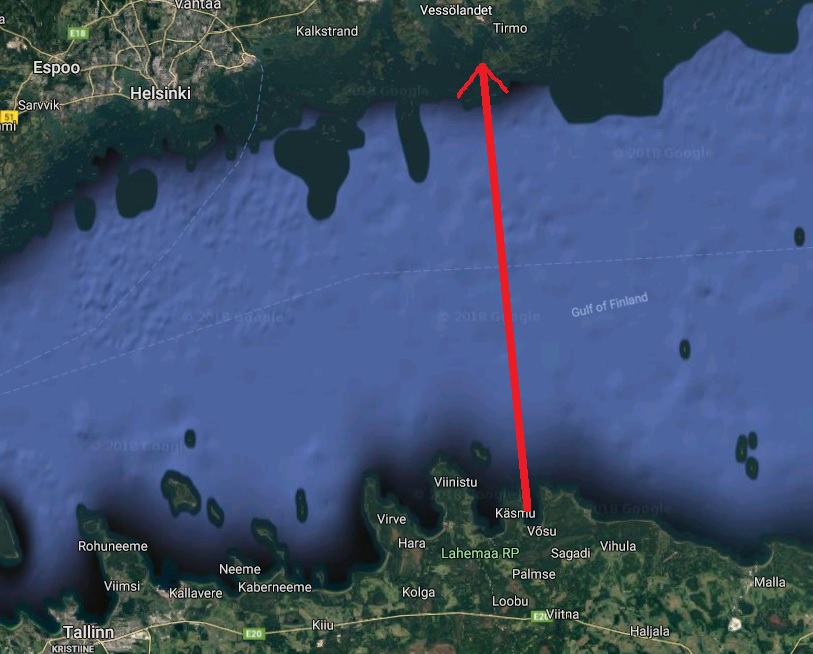
The crew consisted of captain Uku (writing this text) and deckhand Victor. Yet another set of physicists to sail with the boat. We sailed from Käsmu in Estonia to Sandholmen on the island Pellinki in the Finnish archipelago. On our way there, the wind was from the West, blowing 3-7 m/s. We sailed all of the big sea, but used the 1.7 kW Honda outboard motor for the final push in the archipelago, since the wind calmed to a near still and we wanted to be at the port before darkness fell. It took 12 hours to complete the trip there. Our sailing speed varied from 6.5 km/h minimum, 7.5 km/h average to 9 km/h max. Motoring speed was around 7 km/h.
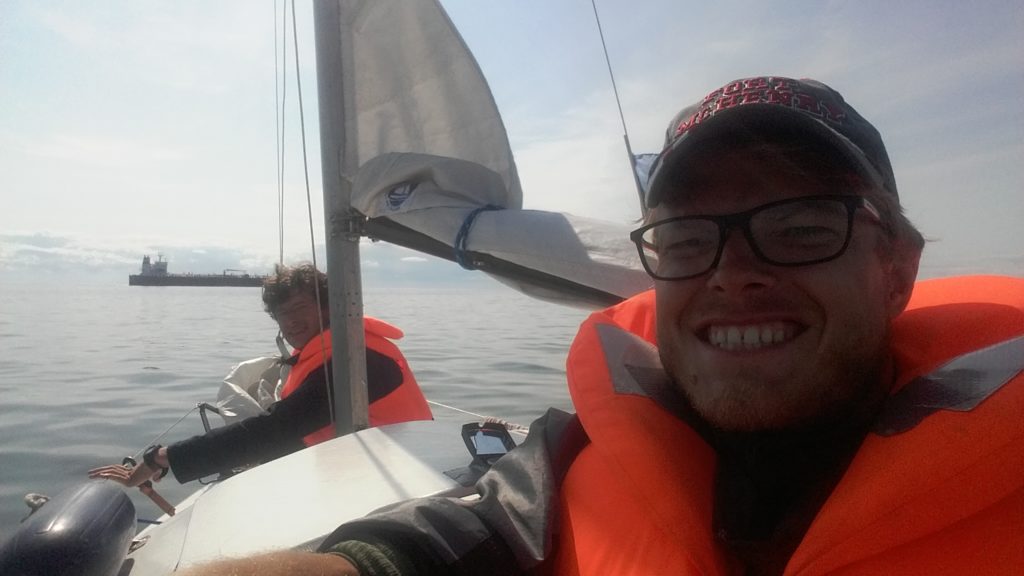
The first excitement on the way there was sighting cargo ships. The Gulf of Finland has rather heavy traffic. We sighted our first ship rather soon after leaving Käsmu. It was a “medium” sized container ship with the letters “KMC” on it’s side. Adrenaline starting kicking in from thereon.
“Is it moving?”, “Which way is it going?”, “Look, I see another one!”, “It is coming straight for us!” were key questions and statements for hours to come. Luckily we managed to pass traffic without incident. These behemoths move at 30 km/h compared to Kvark’s 7 km/h and are pretty much infinitely larger. And infinitely larger they do feel.
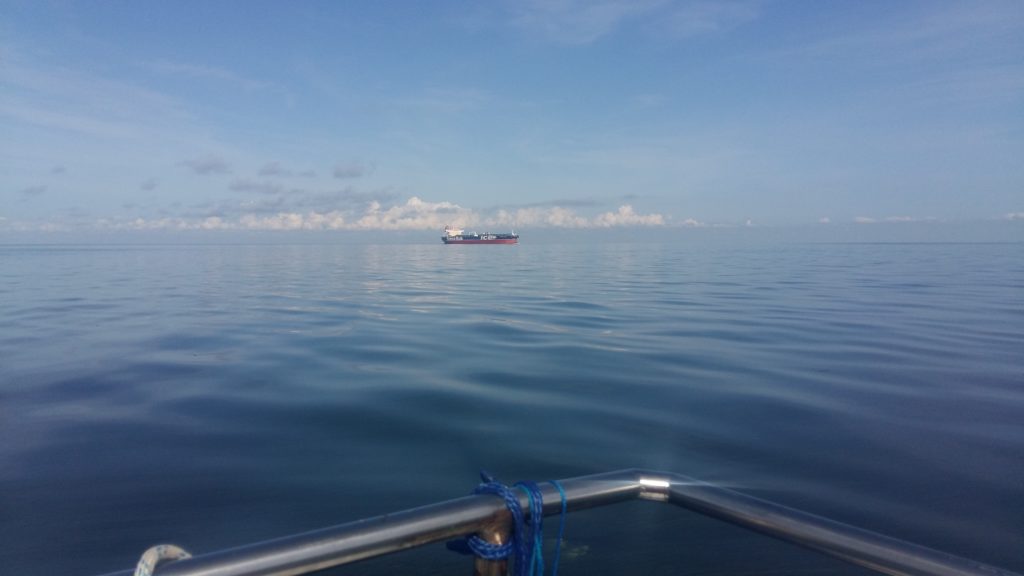
Pictures (more below) really cannot describe the awe of meeting a steel giant on the open sea. It feels.. overwhelming. We realized that Kvark’d better get a radar deflector for longer voyages in traffic zones.
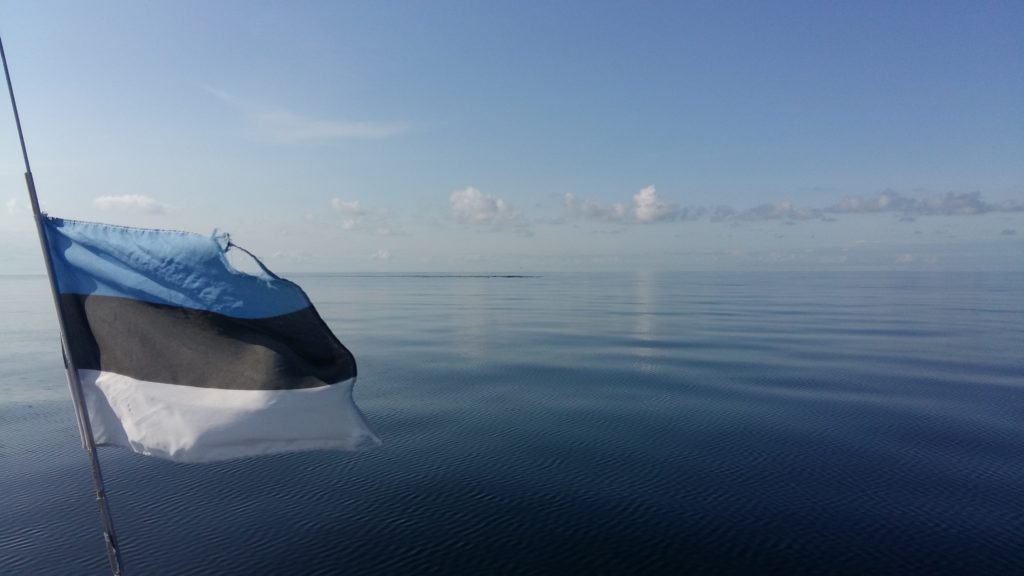
On our way back, the sea was mirror calm, all the way to the Estonian near coast, when a breeze picked up from East, enabling us to sail. Listening to the motor run for 9 hours in a row is.. pretty frustrating. Silence, hearing ambience of the sea and hearing your friends talk are a strong bonus of sailing when compared to a motor.
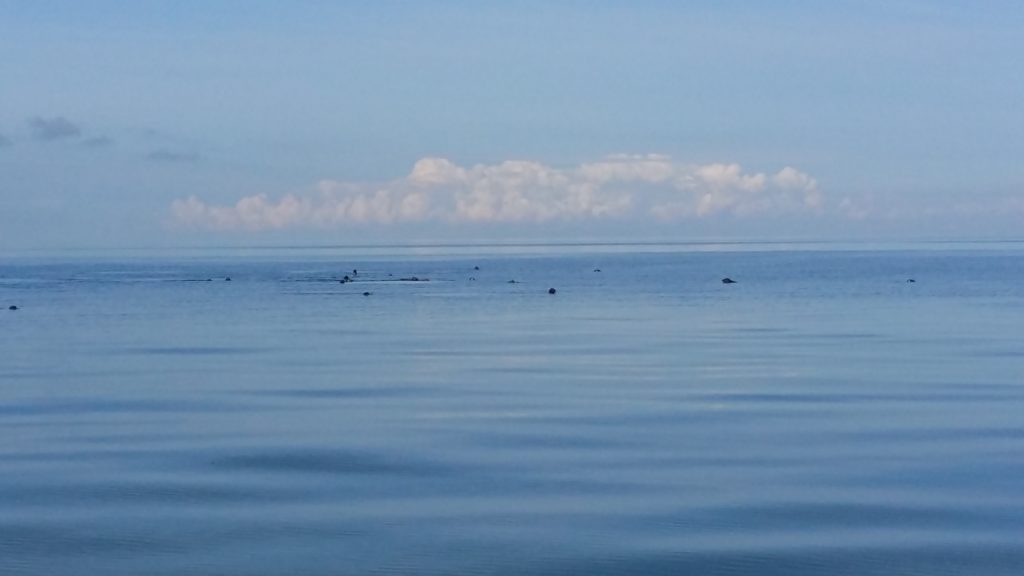
However the calm sea provided us with other entertainment. We saw lots of seals near the coast of Finland. In fact, in one flock, there were over 20 of them (on the picture above). They were very curious of the boat, some of them surfacing (and immediately disappearing) very close to the boat, at 10 meters distance perhaps. They seem very curious animals, looking and inspecting, driving their head high out of the water. It seemed as if the calm sea was also interesting for seals, as they could bask in sunlight and see far and beyond. A hard thing to do in waves.
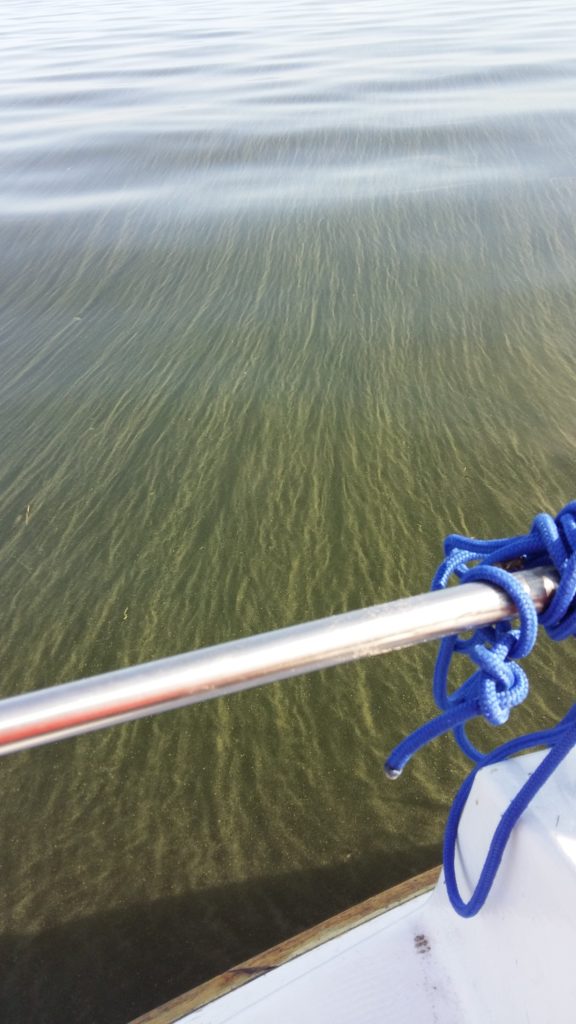
The second day of sailing was in very calm seas. This enabled us to see the massive cyanobacteria bloom. We saw them the whole way from Finland to Estonia. There was more of it near the Finnish coast. It was like ploughing through moss.
A cause of visual applause was also the very massive bloom of cyanobacteria in the whole Gulf of Finland. Namely the sea was throughout the way back covered in a highly green “film”. It looked like thick soup, but gave no resistance to plough through. This bacteria blooms in warm sea and gives off toxic compounds. Not good for swimmers. Interesting to
look at, though!
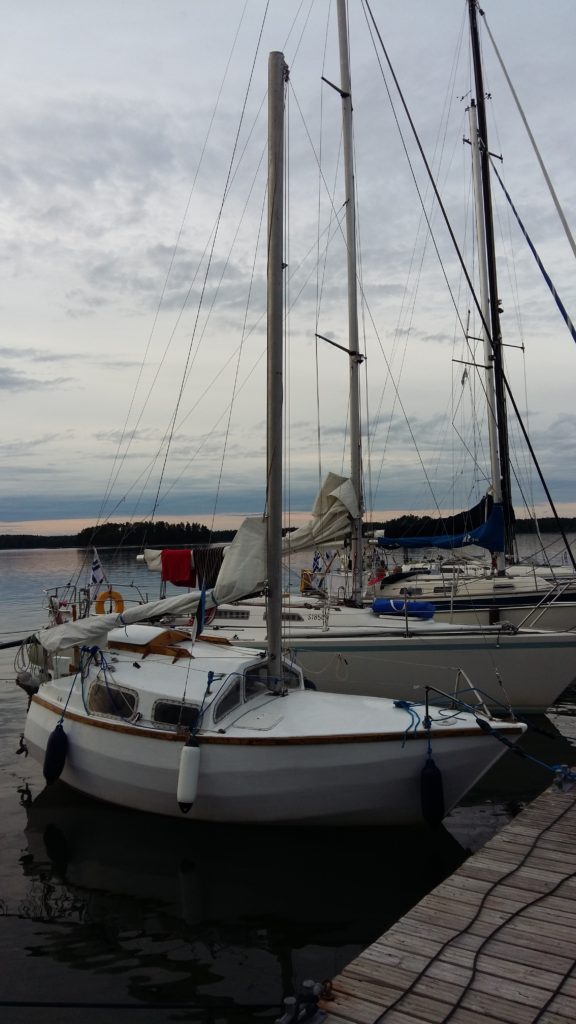
Lessons were learned from this trip and memories and emotions welded into the core of the brain. Who knows, maybe a trip to Sweden next year? Sailing at night is something that really frightens the beginner. We’ll see! I also filmed several video clips of the passage and will cut, edit and upload it in the near future.
Here are more pictures of the trip, there and back again:

